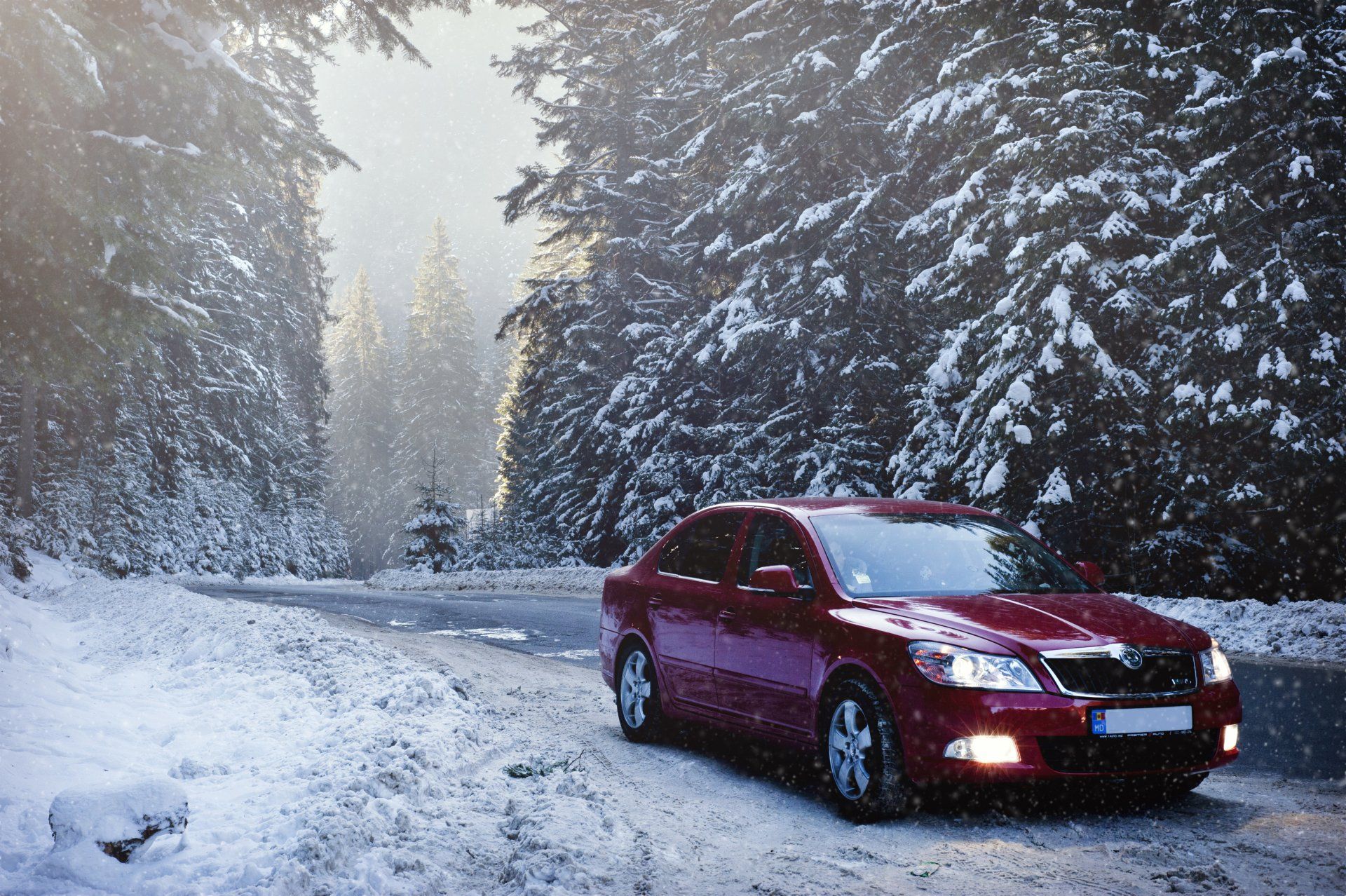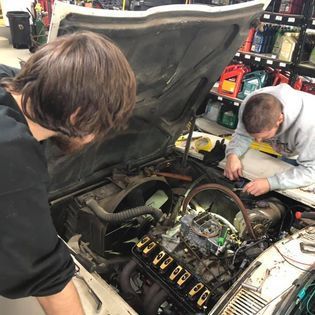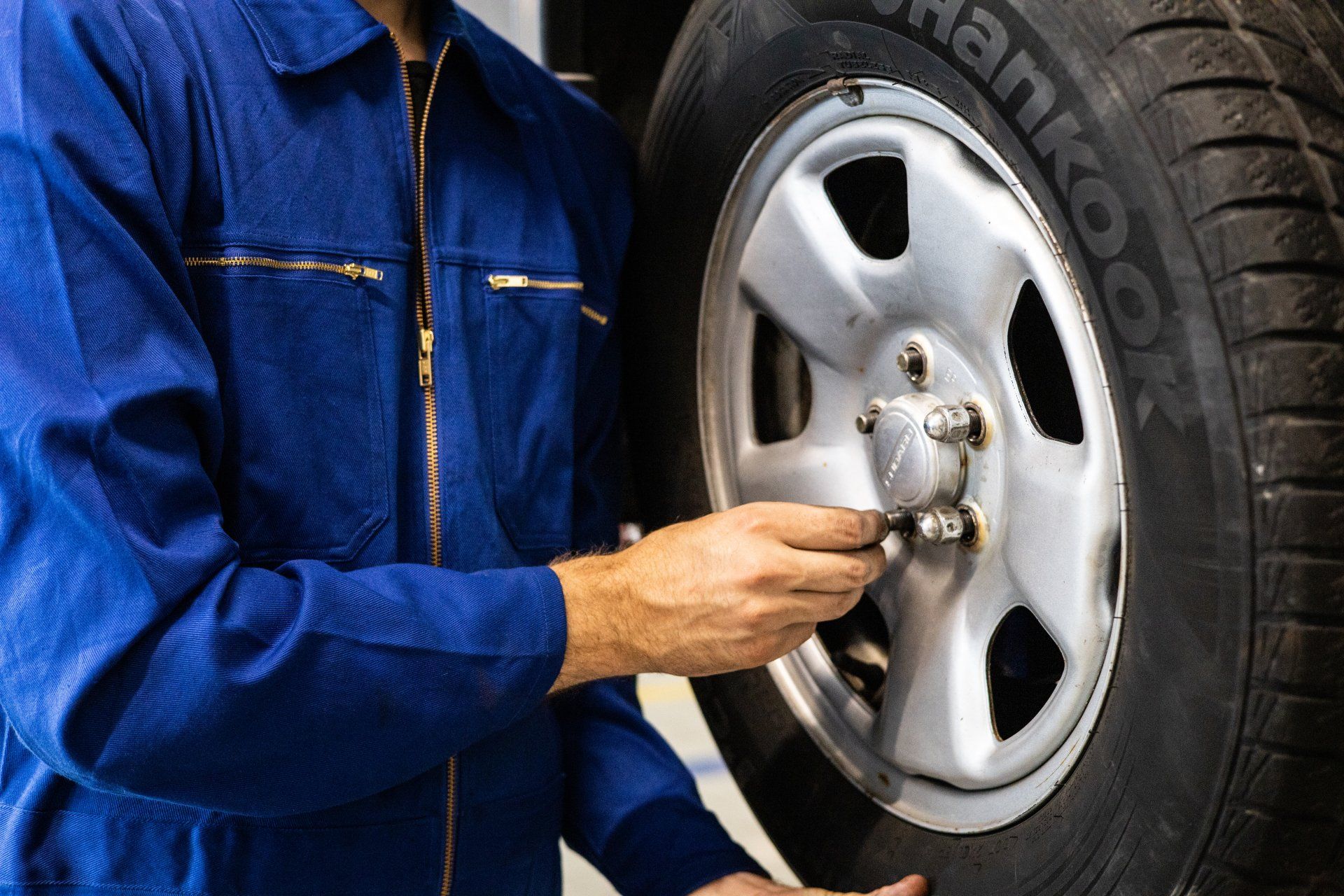Winterizing Your Vehicle: Expert Advice from Big City Automotive
Winterizing Your Vehicle

As the colder months approach, it's important to ensure your vehicle is prepared for the harsh conditions of winter. From icy roads to freezing temperatures, winter weather can take a toll on your car if it's not properly winterized.
With expert advice from Big City Automotive, you can ensure your car stays in optimal condition throughout the winter season, keeping you safe on the road and avoiding costly repairs.
Read on to discover their invaluable tips and get your vehicle ready for winter!
The Importance of Winterizing Your Vehicle
Winterizing your vehicle is not just a matter of convenience; it's a matter of safety. The icy roads, freezing temperatures, and unpredictable weather conditions during the winter can pose serious risks to both you and your car. By taking the time to properly winterize your vehicle, you can minimize these risks and ensure that your car stays in optimal condition throughout the season.
Winter is a magical time of year, but it also brings a whole new set of challenges when it comes to driving. From slippery roads to reduced visibility, winter weather can be a real headache for drivers. That's why it's so important to winterize your vehicle. Not only will it make your car safer to drive in winter conditions, but it can also save you money on costly repairs and fuel costs.
Winterizing your vehicle can improve its traction, visibility, and overall performance, making it safer to drive in winter conditions. By taking preventative measures, such as changing to winter tires, checking your fluids, and performing regular maintenance, you can ensure that your car is running at peak performance and reduce the risk of unexpected breakdowns.
Harsh winter conditions can accelerate wear and tear on your vehicle, but by winterizing your car, you can help extend its lifespan and avoid premature deterioration. Plus, by improving your car's fuel efficiency, you can save money on fuel costs and enjoy a more eco-friendly ride.
But perhaps the best reason to winterize your vehicle is the peace of mind it provides. Knowing that your car is properly prepared for winter can give you the confidence to drive safely and enjoy all that the season has to offer. So don't wait until the first snowfall to winterize your vehicle - take action now and enjoy a safer, more reliable ride all winter long!
Tire Pressure and Tread Depth
One of the most crucial steps in winterizing your vehicle is ensuring that your tires are in optimal condition. Neglecting your tires can lead to reduced traction on icy roads, which can increase the risk of accidents. Don't take any chances with your safety - make sure your tires are in top shape.
Low tire pressure can be detrimental to your safety and the performance of your vehicle. Underinflated tires can cause poor handling, reduced fuel efficiency, and increased tire wear. Don't let these issues compromise your safety. Use a tire pressure gauge to monitor the pressure and inflate your tires to the recommended levels as specified in your vehicle manual or on the driver's side door jamb.
Tread depth is equally important for maintaining good traction on snow-covered or icy roads. The tread depth helps the tires grip the road surface, allowing for better control and braking. Don't risk your safety by driving on worn-out tires. Check the tread depth regularly using a tread depth gauge or the built-in tread wear indicators found on many tires. If the tread depth is below the recommended level, it's essential to replace your tires to ensure optimum safety during winter conditions.
But why stop there? Consider switching to winter tires for enhanced performance. Winter tires are specifically designed to provide better traction, handling, and braking on snow and ice. Their unique tread patterns and rubber compounds are engineered to maintain flexibility in colder temperatures, improving grip and stability. Don't settle for less - invest in your safety by installing a complete set of winter tires.
Don't take any chances with your safety this winter. Make sure your tires are in top shape and consider switching to winter tires for enhanced performance. Remember, your tires are the only thing between you and the road - make sure they're up to the task.
Test Your Battery's Strength
If your battery's voltage is low or near the minimum threshold, it may be time to replace it. It’s recommended to replace your battery before it completely fails, as a dead battery can leave you stranded and in need of a jump-start. Additionally, older batteries are more susceptible to failure in cold weather, so it’s wise to proactively replace them if they are reaching their lifespan.When winter arrives, the condition of your vehicle's battery becomes even more critical. Cold temperatures can significantly reduce a battery's capacity, making it more challenging to start your vehicle. To avoid being stranded in the cold, it’s essential to test the battery's strength and take necessary precautions.
One of the key indicators of a battery's strength is its voltage. A fully charged battery typically measures around 12.6 volts. However, as the temperature drops, the battery's voltage can decrease, affecting its ability to deliver a sufficient amount of power to start your vehicle. To check your battery's voltage, you can use a multimeter or take your vehicle to an auto repair shop for a professional battery test.
In addition to testing your battery's strength, you should also inspect its terminals and connections for any signs of corrosion or damage. Corroded terminals can impede the flow of electricity, leading to starting issues. If you notice any corrosion, you can clean the terminals using a mixture of baking soda and water or a specialized battery terminal cleaner.
Furthermore, it’s essential to minimize battery strain during the winter months. To preserve your battery's strength, avoid leaving headlights, interior lights, or other electrical components on when the engine is not running. Additionally, using accessories such as seat warmers or audio systems for an extended period without the engine running can drain the battery faster.
By testing your battery's strength, replacing it if necessary, and taking precautions to minimize strain, you can ensure reliable starting power during the winter season.
Inspect The Belts and Hoses
Automotive belts and hoses play a vital role in the proper functioning of various systems in your vehicle, including the engine cooling system, power steering system, and alternator. Cold weather can cause these belts and hoses to become more prone to wear and damage, potentially leading to serious issues such as engine overheating or loss of power steering.Winterizing your vehicle involves not only preparing its battery but also ensuring the integrity of other crucial components. One such component that requires attention during the winter months is your vehicle's belts and hoses.
To inspect your vehicle's belts, start by visually examining them for any signs of cracks, fraying, or glazing. These are indicators that the belts may be worn out and need replacement. Additionally, check the tension of the belts – a loose belt can slip and cause the associated system to malfunction. On the other hand, an overtightened belt can put excessive stress on the system's components. Use a belt tension gauge or consult your vehicle's manual for proper tension specifications.
Hoses should also be thoroughly inspected for any signs of leaks, bulges, or cracks. These are clear indications that the hoses are weakened and may need immediate replacement. Pay close attention to areas near hose clamps, as they are prone to leaks. Tugging and twisting the hoses gently can reveal hidden weaknesses. If you notice any coolant residue around the hoses, it’s a sign of a leak and requires immediate attention.
In addition to visual inspection, it’s recommended to feel the hoses for any soft spots or sponginess. This can indicate weakened internal structures and potential hose failure.
Regularly inspecting and replacing worn-out belts and hoses before winter sets in can help prevent costly breakdowns and ensure the overall reliability of your vehicle.
Replace Windshield Wipers
When it comes to winterizing your vehicle, it's essential not to overlook your windshield wipers. With the harsh weather conditions that winter brings, your wipers play a crucial role in maintaining a clear and unobstructed view of the road.
Here's why replacing your windshield wipers should be at the top of your winterizing checklist.
- Safety: Driving in winter conditions already poses its own set of challenges, so it's crucial to prioritize safety. Having reliable windshield wipers is a vital safety measure, as they help you maintain control and respond to changing road conditions. In heavy snow or rain, your wipers provide the necessary support to keep your windshield clear, preventing accidents and ensuring the safety of both you and other drivers.
- Damage prevention: In addition to keeping your windshield clear, properly functioning wiper blades also help prevent damage to your windshield. When old or damaged wipers are used, they can scratch or leave marks on the glass surface, compromising its integrity. By replacing wiper blades, you'll minimize the risk of costly windshield repairs or replacements down the line.
- Easy installation: Replacing your windshield wipers is a simple and straightforward task that can be done in a matter of minutes. Most wiper blades are designed for quick and easy installation, requiring no specialized tools or expertise. By taking the time to replace your wiper blades before winter arrives, you'll ensure that you're prepared for any weather conditions that come your way.
- Visibility: Winter weather often means snow, rain, and sleet, which can significantly impair your visibility while driving. Your wiper blades are responsible for clearing away any precipitation from your windshield, ensuring that you have a clear line of sight. However, over time, wiper blades can become worn out and ineffective, resulting in streaks and smears that further reduce visibility. By replacing your windshield wipers, you'll maintain optimal visibility even in challenging weather conditions.
- Ice and snow removal: Dealing with ice and snow buildup on your windshield can be a major hassle during the winter months. Old or damaged wiper blades can have a difficult time effectively removing ice and snow, leaving you with a partially obstructed view. By installing new, high-quality wiper blades, you'll have the necessary tools to tackle icy and snowy conditions head-on, ensuring that your windshield remains clear at all times.
Don't overlook the importance of properly functioning windshield wipers when winterizing your vehicle. By replacing your wiper blades, you'll improve visibility, enhance safety, and protect your windshield from damage.
Check Antifreeze and Coolant Levels
As the winter months approach, it’s crucial to ensure that your vehicle is prepared for the cold weather. One essential aspect of winterizing your vehicle is checking antifreeze and coolant levels. Antifreeze and coolant are vital for regulating the temperature of your engine and preventing it from freezing in freezing temperatures.
Here's why checking your antifreeze and coolant levels should be on your winterizing checklist:
- Temperature regulation: Antifreeze and coolant not only protect your engine from freezing, but they also help regulate its temperature. During the winter months, it’s essential to maintain the proper operating temperature for your engine. If your coolant levels are low or the mixture is incorrect, your engine may overheat or take longer to warm up, leading to decreased performance and potential damage. By checking your antifreeze and coolant levels, you can ensure that your engine stays within the optimal temperature range, maximizing its efficiency and longevity.
- Corrosion prevention: Antifreeze and coolant also serve as corrosion inhibitors, protecting the various metal components of your engine's cooling system from rust and corrosion. Over time, the coolant can become contaminated with debris and contaminants, reducing its effectiveness and increasing the risk of corrosion. By regularly checking and replacing your coolant, you can prevent corrosion from damaging critical components such as the radiator, water pump, and thermostat, saving you from costly repairs in the future.
- Proper coolant mixture: It’s important to maintain the correct mixture of antifreeze and water in your engine's cooling system. The recommended mixture typically ranges from 50:50 to 70:30, depending on the climate and manufacturer's specifications. Checking your antifreeze and coolant levels allows you to assess the mixture and make any necessary adjustments to ensure optimal protection and performance. Improper coolant mixtures can lead to coolant freezing, overheating, or inadequate heat transfer, compromising your engine's reliability and efficiency.
- Prevention of engine damage: Neglecting to check your antifreeze and coolant levels can have severe consequences for your engine. A frozen or overheated engine can result in costly repairs or even engine failure. By taking the time to check and maintain proper coolant levels, you can avoid these issues and keep your vehicle running smoothly throughout the winter season.
- Protection against freezing: Antifreeze, also known as coolant, is a liquid that is added to your vehicle's radiator to prevent the engine from freezing in low temperatures. It works by lowering the freezing point of the water in your engine's cooling system. Without sufficient antifreeze, your engine's coolant can freeze, causing severe damage to the engine block, radiator, and other cooling system components. By checking and replenishing your antifreeze levels, you can ensure that your engine remains protected and functional even in freezing temperatures.
Checking your antifreeze and coolant levels is a simple yet crucial step in winterizing your vehicle. By ensuring that your engine is properly protected, regulated, and corrosion-free, you can have peace of mind knowing that your vehicle is ready to tackle the challenges of winter driving.
Ensure Proper Brake Function
As you prepare to winterize your vehicle, it's important to pay special attention to your brakes. Winter conditions can be treacherous, with icy roads and reduced traction, making it crucial to ensure that your brakes are in optimal working condition.
Here are a few reasons why checking your brakes should be on your winterizing checklist:
- Prevention of rotor damage: Winter driving conditions can put additional stress on your braking system. Frequent braking on icy or snowy roads can lead to increased wear on brake pads and rotors. By inspecting brake components and addressing any signs of damage or excessive wear, you can prevent further deterioration and potential rotor damage. This can help extend the lifespan of your braking system and save you from costly repairs down the line.
- Peace of mind: Knowing your brakes are in good working condition can provide you with peace of mind as you navigate winter road conditions. Relying on properly functioning brakes can give you the confidence to respond to unexpected situations and make safer driving decisions. It's essential to prioritize brake maintenance and repair to ensure that you and your vehicle are well-prepared for winter driving challenges.
- Enhanced safety: Your vehicle's brakes play a critical role in keeping you and your passengers safe on the road. During winter months, when stopping distances can increase due to slippery roads, it becomes even more important to have reliable brakes. Checking the condition of your brake pads, rotors, and other components can help identify any issues that may affect their performance. By addressing any necessary repairs or replacements, you can ensure that your vehicle has the stopping power it needs to navigate hazardous winter road conditions.
- Improved traction control: Brakes not only help you stop, but they also contribute to maintaining control of your vehicle, especially in challenging driving conditions. Anti-lock braking systems (ABS) are designed to prevent your wheels from locking up when braking, allowing you to maintain steering control. Ensuring that your ABS is working properly and that all components are in good condition can help maximize your vehicle's traction control capabilities. This can be particularly important in icy or snowy conditions when maintaining control is essential.
- Brake fluid maintenance: Brake fluid is an essential component of your vehicle's braking system. It transfers the force exerted on the brake pedal to each wheel, enabling the vehicle to slow down or stop. However, over time, brake fluid can absorb moisture, reducing its effectiveness and potentially causing brake failure. It's crucial to regularly check the condition and level of your brake fluid and replace it as needed. This not only helps maintain proper braking function but also prevents corrosion and damage to other brake system components.
Taking the time to check your brakes and address any necessary repairs or maintenance can help ensure the safety and reliability of your vehicle during the winter season. By maintaining proper brake function, you can have peace of mind and enjoy a safer driving experience.
Maintain a Full Gas Tank
When winterizing your vehicle, one of the essential tips is to have a full gas tank.
Here's why keeping your gas tank full is important during the winter months:
- Avoiding fuel line damage: In extremely cold temperatures, gasoline can become less dense and more prone to fuel line damage. This can result in fuel leaks or cracks in the lines. By keeping your gas tank full, you ensure that there is less air space in the tank, reducing the chances of fuel line damage due to expansion and contraction caused by temperature fluctuations.
- Convenience during inclement weather: It’s always more convenient to have a full gas tank during harsh winter weather. You won't need to make additional stops at gas stations, potentially exposing yourself to extreme temperatures or hazardous road conditions. Having a full tank allows you to focus on reaching your destination safely without worrying about finding a gas station along the way.
- Preventing fuel line freeze: In cold weather, condensation can occur inside your vehicle's fuel tank. This moisture can freeze and form ice, leading to blockages in the fuel lines. By keeping your gas tank full, you reduce the space for condensation to form, minimizing the risk of fuel line freeze. A full gas tank helps maintain fuel flow and prevents potential starting or engine performance issues.
- Emergency preparedness: Winter weather conditions can be unpredictable, and you might find yourself stranded on the road due to accidents, traffic jams, or extreme weather events. In such situations, having a full gas tank can be crucial. It ensures that you have enough fuel to keep your engine running and maintain heat inside the vehicle if you need to wait for assistance or shelter. A full gas tank provides an extra layer of emergency preparedness during winter.
- Weight distribution and traction: Vehicles with full gas tanks tend to have more weight over the rear wheels, which can improve traction on slippery roads. Rear-wheel-drive vehicles, in particular, benefit from the added weight over the drive wheels, enhancing stability and control. This weight distribution can be especially helpful when navigating icy or snowy terrain, reducing the risk of loss of control or skidding.
Remember to check your gas tank regularly and keep it filled throughout the winter season. By maintaining a full gas tank, you can prevent fuel line freeze, ensure emergency preparedness, improve weight distribution and traction, avoid fuel line damage, and enjoy the convenience of not having to stop for refueling during inclement weather.
Stock Up on Essential Winter Supplies
As winter approaches, it's important to prepare your vehicle for the changing weather conditions. One essential tip for winterizing your vehicle is to stock up on essential winter supplies.
Here are some items you should consider having on hand:
- Tire chains or snow tires: Depending on where you live, investing in tire chains or snow tires can greatly improve your vehicle's traction on slippery roads. These can provide better grip and reduce the chances of skidding or getting stuck.
- Sand or kitty litter: If you find yourself in a situation where your vehicle is stuck on icy or slippery surfaces, spreading sand or kitty litter around your tires can help provide traction and allow you to regain control.
- Extra windshield wiper fluid: Winter weather often means dirty and slushy roads, which can quickly deplete your windshield wiper fluid. Having an extra bottle in your vehicle will ensure that you can maintain clear visibility while driving.
- Blankets and extra warm clothing: In case of an emergency or if you get stranded, having blankets and extra warm clothing can help keep you and your passengers warm while waiting for assistance.
- Non-perishable snacks and water: It's always a good idea to have some non-perishable snacks and water in your vehicle in case you're stuck or stranded for an extended period. These supplies can help keep you nourished and hydrated until help arrives.
- Portable phone charger: In emergency situations, having a fully charged phone can be a lifeline. A portable phone charger will ensure that you can stay connected and call for help if needed.
- First-aid kit: Accidents can happen at any time, so it's essential to have a well-stocked first-aid kit in your vehicle. Make sure it includes bandages, antiseptic wipes, pain relievers, and any necessary medications.
- Roadside emergency kit: A roadside emergency kit should include items such as jumper cables, a flashlight with extra batteries, a reflective warning triangle, a tire pressure gauge, and basic tools. These tools can help you handle minor vehicle issues and stay safe while waiting for assistance.
- Ice scraper and snow brush: Clearing off snow and ice from your windshield and windows is crucial for visibility and safe driving. An ice scraper with a brush attachment will help you remove ice and snow effectively.
- Snow shovel: In case your vehicle gets stuck in the snow, having a snow shovel can be a lifesaver. It will allow you to clear the snow around your tires and create a path for your vehicle to move.
By stocking up on these essential winter supplies, you'll be better prepared to handle any unexpected situations on the road during the winter months. Remember to regularly check and replenish your supplies throughout the season.
Schedule a Professional Inspection
When it comes to winterizing your vehicle, one of the most important steps you can take is to schedule a professional inspection. While there are several DIY tasks you can do to prepare your vehicle for winter, having an expert eye inspect your vehicle ensures that all potential issues are addressed and that your vehicle is in optimal condition for winter travel.
Here's why scheduling a professional inspection is essential:
- Early Detection of Problems: A professional inspection can help detect any underlying problems that may not be immediately apparent to the average driver. Issues such as worn-out brake pads, weak battery, or low tire tread depth can be identified and addressed before they escalate into major problems on the road.
- Safety Assurance: Winter driving conditions can be challenging, with factors such as snow, ice, and reduced visibility. By having your vehicle inspected by a professional, you can ensure that all safety systems are functioning properly. This includes checking the effectiveness of your headlights, windshield wipers, defrosting system, and traction control.
- Optimal Performance: Cold temperatures can affect your vehicle's performance, leading to decreased fuel efficiency and potential breakdowns. During a professional inspection, the technician can fine-tune your vehicle to optimize its performance in winter conditions. This may include adjusting tire pressure, changing the type of oil, or replacing worn-out components.
- Peace of Mind: Knowing that your vehicle has been thoroughly inspected and deemed winter-ready can provide you with peace of mind while driving in challenging conditions. You can have confidence that your vehicle is equipped to handle the cold weather, reducing the risk of unexpected breakdowns or accidents.
- Comprehensive Evaluation: A professional inspection involves a thorough evaluation of various components of your vehicle, including the engine, brakes, tires, battery, heating system, and more. This comprehensive assessment allows a trained technician to identify any potential issues that may affect your vehicle's performance in winter conditions.
Remember to schedule your professional inspection well in advance of the winter season. This will allow ample time for any necessary repairs or maintenance to be completed before the colder weather sets in. By taking this proactive step, you can ensure that your vehicle is in top shape and ready to tackle whatever winter throws your way.
Prioritize the winterization of your vehicle by scheduling a professional inspection and implementing the expert tips provided. By doing so, you can safeguard your vehicle's performance, ensure safety on the road, and navigate through the winter season with ease.
Stay tuned for more valuable tips and insights in our upcoming blog posts as we continue to guide you through the essential aspects of winterizing your vehicle.
Call
Big City Automotive to schedule a professional inspection at
(309) 339-7302.





